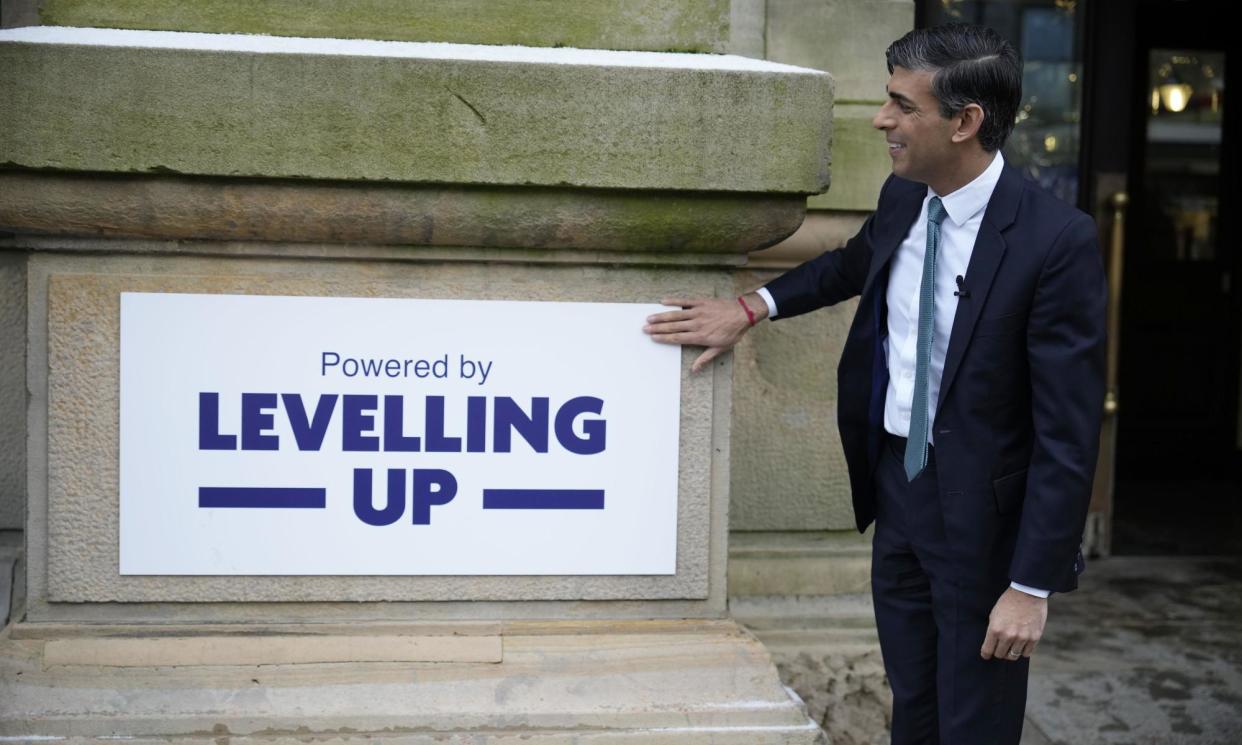Levelling up: what has the government spent – and where?

It was July 2021, Boris Johnson was still prime minister and enthusiasm for the government’s levelling up programme was palpable. It was “the mission of this government to unite and level up across the whole UK”, Johnson proclaimed in a wide-ranging speech on the topic.
Three years on, the enthusiasm of the then prime minister has been cast in a new light. The Department for Levelling Up has been “blinded by optimism in funding projects that were clearly anything but ‘shovel-ready’, at the expense of projects that could have made a real difference”, according to the Commons public accounts committee (PAC).
What levelling up includes is still hard to grasp; a 2022 policy document mentions no fewer than 35 pots of money covering everything from broadband to low emission vehicles and brownfield sites.
However, the PAC report concentrated on the larger funds most closely associated with the project – the eponymous levelling up fund, the UK shared prosperity fund and the towns funds.
Towns fund
The towns fund – made up of town deals and the future high streets fund – proved to be the most controversial of three main pots of money that made up the government’s levelling up agenda.
It was established to provide grants of up to £25m to aid economic regeneration, generate investment and build vital infrastructure – but the impartiality of the fund has long been called into question. In 2021 an academic study found that Conservative ultra-marginal seats were 45% more likely to be allocated funding than others, calling it an example of “pork barrel” politics – where public money is used to gain electoral advantage.
A Guardian analysis of money allocated under the so-called town deals (which make up 74% of the overall towns fund) found that the most deprived Conservative constituencies received £120 per capita, compared with just £27 per capita in the most deprived Labour constituencies.
The PAC found that 65% of the towns fund had been released to local councils, but just 20% had been spent as of last September.
Levelling up fund
The best known of the funds that make up the government’s spending on the programme is the levelling up fund – which promised £4.8bn to communities across the UK.
However, just £809m has been released to councils to date, with an even smaller amount – £512m – actually spent by the councils.
Analysis by the Guardian found that earlier rounds of the levelling up fund disproportionately benefited people living in Conservative constituencies. Voters in Tory seats got £19.47 more a head than those in similarly deprived non-Conservative areas in the second round of funding.
However, the government changed how the funds were allocated in the third round, moving away from the competitive bidding process. As a result, the latest allocations, announced in November, were more equitable in terms of political spread.
UK shared prosperity fund
The £2.5bn UK shared prosperity fund, and its predecessor, the community renewal fund, were envisaged as a replacement for the EU funds which used to come through the European structural and investment programme.
The fund – which includes £430m ringfenced for an adult numeracy programme – has seen only £834m released so far to local councils, and just £84m had been spent as of April 2023.
The Guardian’s analysis found no statistically significant association between the allocation of the shared prosperity fund and political control.
Other pots of money
From those three funds, the north-west of England, Yorkshire and the Humber and West Midlands have been allocated the most money – but they are far from the only funding streams. Here’s an exhausting but non-exhaustive list of other pots of money loosely associated with the government’s levelling up agenda:
The community ownership fund, transforming cities fund, strength in places fund, brownfield land release fund, levelling up partnerships, capital levelling up bids, capital regeneration projects, long-term plan for towns, rural England prosperity fund, green homes grant local authority scheme, freeports, education investment areas, project gigabit, places for growth programme, borderlands inclusive growth deal, city and growth deals, trade and investment hub, zero emission bus regional areas scheme, global Britain investment fund, enterprise zones, creative scale up programme, made smarter programme, national bus strategy and cycling and walking plan, city region sustainable transport settlements, local skills improvement plans, institutes of technology, getting building fund, levelling up parks fund, and violence reduction units.
While the roll call might be impressive, the sheer number of funding streams means a full analysis of the government’s spend – when it is complete – will prove a mammoth task.
But from what we know now, can we say that levelling up has been a success for this government?
“I believe we will have made progress in levelling up when we have begun to raise living standards, spread opportunity, improved our public services and restored people’s sense of pride in their community,” Johnson said as he concluded his 2021 speech.
The PAC concluded in March: “The government is unable to provide any compelling examples of what levelling up funding has delivered so far,”.
With a general election expected this year, people will make up their own minds.


